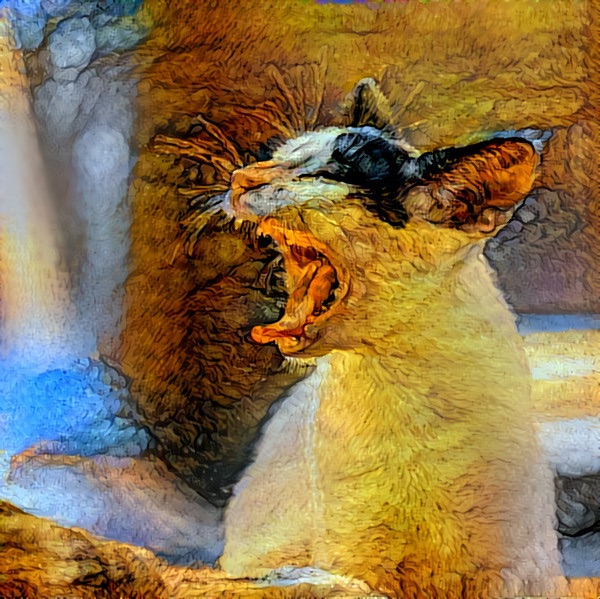I was 11 years old when I took my first yoga class with with Arlene Corwin, a wonderful Yoga Teacher who lived in Oxford. The first two classes I felt restless and fidgeted throughout shavasana.
The third class was different. During the final relaxation I went deep and did not want to resurface. Arlene closed the class with an Aum chant and I started to yawn. Not wanting to be disrespectful, I tried to suppress the urge and when it got away from me, I covered my mouth.
Setting up the meeting room after class was over, unfolding tables and rearranging chairs, I felt another yawn coming. “Don’t suppress the urge to yawn.  Let it out.” Arlene said and yawned herself. After that, I could not stop yawning – yawn after yawn, until my eyes watered. I felt wonderful on the drive home, alert and calm and happy. Since then I like to start my mornings out with yawning in bed. Throughout the day I yawn anytime I feel the urge. Every Yoga class I yawn. Falling asleep I yawn. If I wake up in the middle of the night, I yawn until I fall back asleep.
Let it out.” Arlene said and yawned herself. After that, I could not stop yawning – yawn after yawn, until my eyes watered. I felt wonderful on the drive home, alert and calm and happy. Since then I like to start my mornings out with yawning in bed. Throughout the day I yawn anytime I feel the urge. Every Yoga class I yawn. Falling asleep I yawn. If I wake up in the middle of the night, I yawn until I fall back asleep.
I never suppress a yawn, although I do cover my mouth when I feel that others might be offended. I often yawn with my whole body – mouth, arms, legs, fingers and toes! I no longer wait for the urge to yawn, but instead, practice yawning anytime I think about it. Yawning is the perfect Yogic ‘complete breath’ and is an under utilized form of Pranayama.
Human fetuses begin to yawn and pandiculate (stretching and yawning at the same time) at the twelfth week of pregnancy. All vertebrates yawn! Humans, primates, mammals,  marsupials, birds and reptiles all share this behavior. This tells us that yawning is an ancient and vitally important reflex.
marsupials, birds and reptiles all share this behavior. This tells us that yawning is an ancient and vitally important reflex.
Only ‘civilized’ humans suppress the urge to yawn and do so to their own detriment. I found a website with photos of famous people yawning with the text “…every single ugly moment that celebrities may not want us to see, including awesome pics of them yawning.” The first photo is of the Dali Lama yawning.
The scientific community is just beginning to realize just how important yawning is to our overall health and well being.
The idea that Yawning implies that someone is bored, uninterested or tired is wrong. Yawning helps us transition from wakefulness to sleeping at night, but it also helps us transition from sleeping to wakefulness in the morning. Yawning increases circulation of cerebrospinal fluid and plays a role in arousal. Yawning also helps you relax when you are stressed, which is why olympic athletes are often seen yawning prior to competition.
When you yawn repetitively you increase the effects. Frequent yawning helps lower the temperature of the brain, which is why some theorize that  often those with brain damage or Multiple Sclerosis have reported abnormally high rates of yawning (the theory is that yawning, by lowering the temperature of the brain helps to minimize inflammation and other damaging effects on the nervous system). Frequent yawning releases dopamine. Once released, dopamine activates oxytocin production in the hypothalamus and hippocampus, areas of the brain essential for:
often those with brain damage or Multiple Sclerosis have reported abnormally high rates of yawning (the theory is that yawning, by lowering the temperature of the brain helps to minimize inflammation and other damaging effects on the nervous system). Frequent yawning releases dopamine. Once released, dopamine activates oxytocin production in the hypothalamus and hippocampus, areas of the brain essential for:
- Memory recall
- Voluntary control
- Temperature regulation
In addition to Dopamine, frequent yawning releases a cocktail of neurologically beneficial compounds such as:
- Acetylcholine
- Nitric oxide
- Oxytocin
- Glutamate
- GABA
- Serotonin
- ACTH
- MSH
- Sexual hormones
- Opium derivate peptides
No wonder a good yawn feels so wonderful!
Now let us consider the well documented contagious nature of yawning. Imagine a tribe that lives in close proximity and openly yawn in public. Every yawn would trigger more yawns, passing around the through the community, and coming back to trigger additional yawns in the originator. The entire tribe would experience higher levels of nitric oxide, oxytocin (associate with bonding) and Opium derivate peptides.
Because we live in relative isolation compared to our tribal ancestors sharing a cave, and because when we are out in public, yawning is suppressed, and hidden, we are less likely to get ‘triggered’ by contagious yawning. The good news is that you can initiate your own yawn, rather than waiting for it to happen.
There are lots of tricks that I have discovered on my journey to becoming a master yawner. The simplest of which is to fake yawning until you yawn. Usually 5 or 6 fake yawns will trigger a real one but with practice, you can just yawn on command. Then yawn again and again, ideally until your eyes water and you feel completely alert and centered. With practice, you can improve the quality and increase the frequency of yawning. Above all, practice the yoga practice of ‘aparagrapha’ (non-hoarding). Be sure and share your yawns with others: family; friends; and complete strangers! Namaste’
11 Comments
-
Yeah, you are right. I am a yoga practitioner for over two decades and has been immensely benefited from it.
I cured many of my ailments during the initially ‘mysterious’ looking yoga and meditation journey of mine.
I am again going deeper in to it and want to share my experiences to benefit others.
Yoga, as you indicated is a great science and it becomes very simple to understand after some patience practice and guidance.
Yes, Anuloma Viloma or Nadi Shodhan Pranayama induces yawning for inner healing.-
Author
Rajnish, thanks for sharing your experiences and confirming that anuloma viloma can induce yawning. I have noticed for some time that nadi shoden had a similar effect. Best of luck with your journey.
-
-
Yes! Shared this with St. David’s Cardio Pulmonary Rehab. Thanks.
On other topic, Where do you get these gorgeous paintings?
-
Thank you for sharing with St. Davids and putting me in touch with them. I have sent in a proposal to offer a training for their staff and now waiting to hear back. I will let you know if anything comes of this.
Regarding paintings, I find photographs on sites like Pexels ( a royalty free site for photographs) and then play with them to create the effects that I like using a variety of tools including IBM’s deep dream software. Glad you like them. -
Author
Julie, thank you for your introduction to St. David’s. I have been in touch with them, and now waiting to see if anything develops from your introduction. I will keep you posted. Regarding the images I use on my site, I find appropriate photos on sites like Pexels (a royalty free photography site), and the play with those images using a variety of tools including IBM’s Deep Dream Generator to create new images for my site. I am glad you like them.
-
-
Have you tried anulom vilom yoga pranayam. It always makes me yawn.
-
Author
I have not noticed a connection to anulom viola pranayama, but I am looking forward to trying it to see if I get the same results. Thank you for the feedback.
-
Author
Hello Gypsy, since you posted that viloma pranayam makes you yawn, I have had several other students post the same observation. Just thought you would like to know!
-
-
OMG….yawned through the whole article and now I can’t stop. Thank you!!
-
I like this , Charles. I tried it and I must have yawn a dozen times last night.
With your permission I will share with my students? Thanks for sharing!
Love . . .-
Author
Hello Katy,
Yes, please feel free to share with any you think might be interested. Namaste’
-






